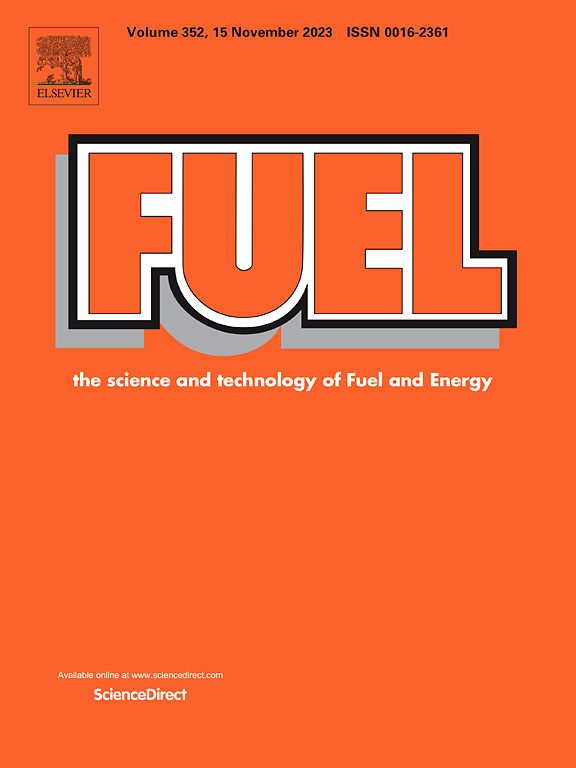基于深度学习的600mw燃煤锅炉NOx排放预测:基于基尼指数和轻量级卷积神经网络的电厂数据学习
IF 6.7
1区 工程技术
Q2 ENERGY & FUELS
引用次数: 0
摘要
选择性催化还原(SCR)是控制燃煤锅炉污染物排放的关键技术。准确预测SCR进口的氮氧化物排放量有助于提高反硝化效率。然而,传统的预测模型无法有效地建立氮氧化物排放与燃烧控制变量之间的动态映射关系。为了提高NOx排放的预测精度,本研究采用多模态变形卷积神经网络(DFC-CNN)构建动态模型。DFC-CNN通过调制可变形的感受野,提高了模型提取隐藏特征的能力。为了提取关键变量,我们使用基尼指数来衡量变量的重要性。为了评估DFC-CNN的预测能力,利用一台600mw燃煤锅炉的真实历史数据进行了仿真实验。反向传播(BP)和长短期记忆(LSTM)的对比实验表明,DFC-CNN在瞬态条件下的预测精度明显优于传统模型(如BP和LSTM)。与基线CNN相比,扩展感受野和引入调制因子显著提高了DFC-CNN的预测性能。均方根误差(RMSE)、平均绝对误差(MAE)和平均绝对百分比误差(MAPE)分别为12.077 mg/m3、8.628 mg/m3和0.018,决定系数(R2)为0.973。计算流体动力学(CFD)模型需要数天时间来预测工作状态,相比之下,DFC-CNN模型只需要几秒钟。基于dfc - cnn的建模方法可以满足工业生产的需求,支持更清洁燃烧的燃煤锅炉。本文章由计算机程序翻译,如有差异,请以英文原文为准。

Prediction of NOx emission from a 600 MW coal-fired boiler with deep learning: Plant data learned by Gini index and lightweight convolutional neural network
Selective catalytic reduction (SCR) is a key technology for controlling pollutant emissions from coal-fired boilers. Accurate prediction of nitrogen oxide emissions at the SCR inlet helps improve denitrification efficiency. However, traditional prediction models are unable to efficiently establish dynamic mapping relationships between nitrogen oxide emissions and combustion control variables. To improve the prediction accuracy of NOx emissions, this study adopts a Deformable Convolutional Neural Network for Multimodal (DFC-CNN) to build a dynamic model. DFC-CNN improves the model ability to extract hidden features by modulating the deformable receptive field. To extract the key variables, the Gini index was used to measure the importance of the variables. To evaluate the prediction capabilities of DFC-CNN, a simulation experiment was executed using real historical data from a 600 MW coal-fired boiler. Comparative experiments between Back Propagation (BP) and Long Short-Term Memory (LSTM) showed that the prediction accuracy of DFC-CNN under transient conditions significantly outperformed the traditional models (such as BP and LSTM). Compared to the baseline CNN, the expanded receptive field and introducing the modulation factor significantly improved the prediction performance of the DFC-CNN. The Root Mean Square Error (RMSE), Mean Absolute Error (MAE), and Mean Absolute Percentage Error (MAPE) were 12.077 mg/m3, 8.628 mg/m3, and 0.018, while the coefficient of determination (R2) was 0.973. Compared to Computational fluid dynamics (CFD) models, which require several days to predict a working condition, DFC-CNN models only need a few seconds. The DFC-CNN-based modeling method can meet the demands of industrial production and support cleaner combustion coal-fired boilers.
求助全文
通过发布文献求助,成功后即可免费获取论文全文。
去求助
来源期刊

Fuel
工程技术-工程:化工
CiteScore
12.80
自引率
20.30%
发文量
3506
审稿时长
64 days
期刊介绍:
The exploration of energy sources remains a critical matter of study. For the past nine decades, fuel has consistently held the forefront in primary research efforts within the field of energy science. This area of investigation encompasses a wide range of subjects, with a particular emphasis on emerging concerns like environmental factors and pollution.
 求助内容:
求助内容: 应助结果提醒方式:
应助结果提醒方式:


